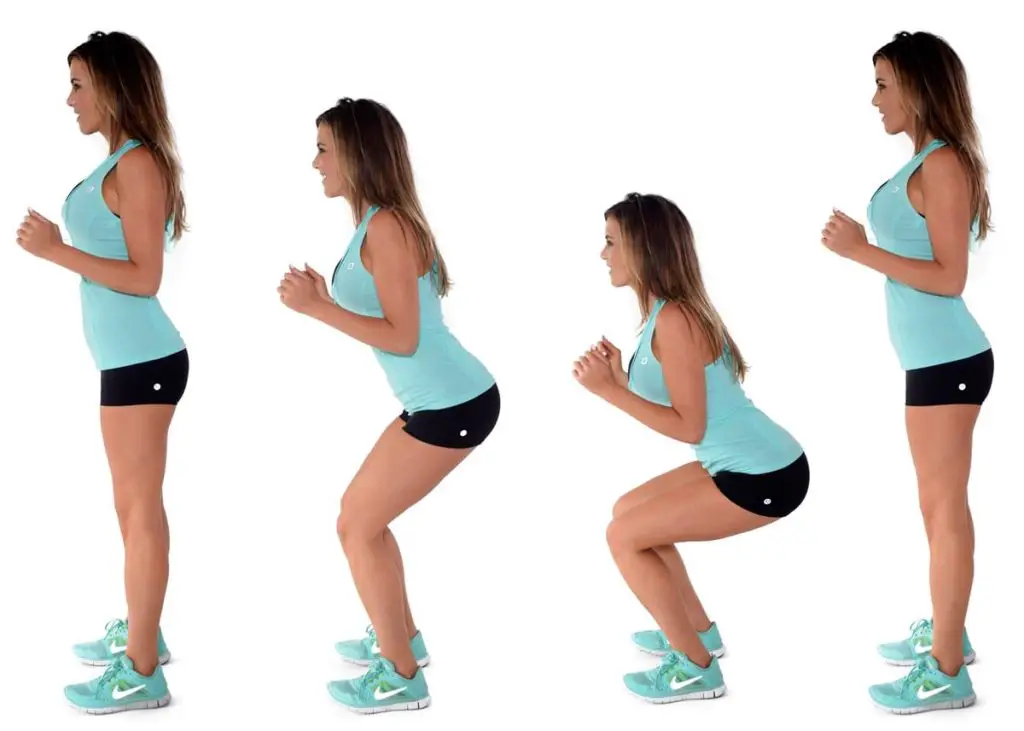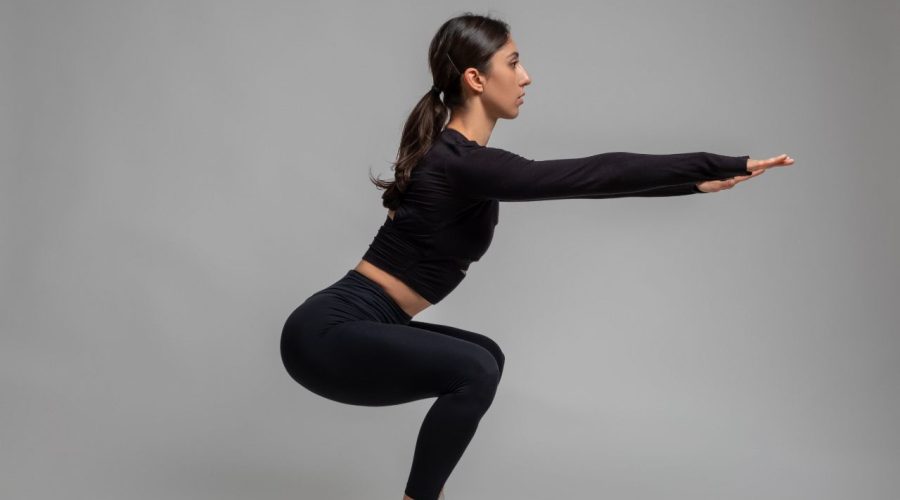How Many Squats a Day to Lose Belly Fat? We Have the ANSWER
Squats are the single most effective workout for strengthening and conditioning your lower body. The incredibly straightforward and efficient bodyweight exercise targets all the major lower-body muscular groups, even the most inaccessible ones.
Squatting is more than simply an exercise. It is a fundamental human movement pattern required to improve performance, reduce injury risk, and execute daily activities such as walking, climbing stairs, bending, and lifting heavy loads.
According to several fitness gurus, the squat is a daily workout that everyone must perform if they are serious about losing that belly fat.
Which Muscles are Involved
Squats are a lower body-weight exercise that focuses on the major leg muscles. A typical bodyweight squat engages the quadriceps, hamstrings, glutes, abdomen, and calf muscles.
How to do Squat

Step 1: With your feet wider than hip-width apart and your hands in front, stand upright on the ground.
Step 2: Inhale, engage your core, push your buttocks out, and squat down by bending your knees (thighs parallel to the ground).
Step 3: Place your weight on your heels and maintain a neutral spine.
Step 4: Pausing for two to three seconds, then returning to the starting position.
Note of Caution
When performing squats, you must pay close attention to your form. Improper form can result in injury and muscular tension.
- When completing this exercise for the lower body, the knees should be in line with the feet. Consider it a warning sign if knees are leaning forward beyond the tips of their toes or teetering to one side.
- Additionally, squat as low as your butt will allow. You will injure your knees if you exert excessive effort.
How many squats a day to lose belly fat? Here is Your Answer
There is no set number; it all depends on one’s endurance. But if you are a newbie, you must go cautiously. Overtraining your body will have no positive effects. In the beginning, begin with three sets of 15 repetitions of standard squats. After a week, you can experiment with squat variations such as the wide or side squat. Then, take a dumbbell and perform five additional repetitions.
The number of calories burned by this exercise depends on your weight, the intensity of the exercise, and the type of squat being performed. A person who weighs 75 kg and performs classic squats for 10 minutes can typically burn 52 calories. The number of calories burned increases as the difficulty of a workout increases.
Once you have mastered the basic squat, you should challenge your body by increasing the number of repetitions, and the intensity, and by attempting various squat modifications. Squat variations include the goblet squat, jump squat, sumo squat, Bulgarian split squat, and overhead squat. You will burn more calories and target a bigger muscle region by including these variants in your training programme.
Having said that, apart from doing squats daily, you also need to focus on your diet to maintain a calorie deficit state. You will ONLY lose fat if you are in a calorie deficit state.

